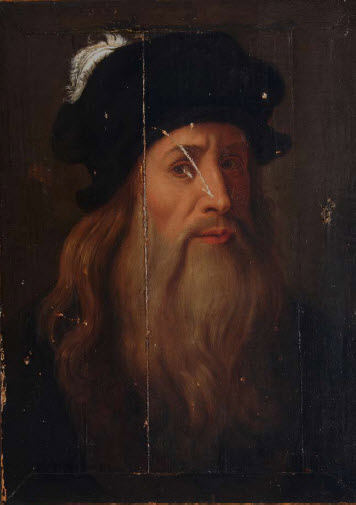Lessons in Creativity from Leonardo
Creativity is a muscle that we all have. It can be strengthened. It can be practiced. It’s not an inherent trait that only a chosen few are anointed with.
I firmly believe this, but it’s also one of the central themes of Walter Isaacson’s biography of Leonardo da Vinci. In the book he highlights Leonardo’s ordinary human habits that anyone can adopt to be more creative. I wrote them down as a reminder to myself, and to help others be more creative.
 Self-portrait of Leonardo da Vinci
Self-portrait of Leonardo da Vinci
The Lessons
- Be observant. Look closely at every detail. Like, really closely. Uncomfortably closely. Marvel in the beauty and complexity of the world. As Leonardo put it: “If you wish to have a sound knowledge of the forms of objects, begin with the details of them, and do not go on to the second step until you have the first well fixed in memory.”
- Be curious. Why is the sky blue? How does a hummingbird’s tongue work? What makes people yawn? These are common occurrences that most people don’t give a second thought, but Leonardo did. He followed pursuits of inquiry like these not because he thought they had any practical use, but purely out of curiosity. Some of these never led anywhere (like studying the tongue of hummingbirds), while others influenced his work in suprising yet profound ways (like anatomy and Mona Lisa’s smile).
- Abandon paths that aren’t working. Leonardo left a wake of unfinished work behind him. He often began projects, but gave them up or changed direction when the path he chose was a dead end. Sometimes he would return to a piece after years of not touching it (he worked on the Mona Lisa until the end of his life, and is technically “unfinished”). This practice gave Leonardo the space to pursue multiple creative endeavors at once, and to let ideas marinate until they were ready.
- When you’re stuck, take a break. Leonardo was known to stare at a painting for hours, make one small brush stroke, and leave. Then he may return the next day, week, or year to keep working. What he was doing was focusing deeply on a problem, then leaving to focus his conscious mind elsewhere so that his unconscious mind could take over. The unconscious mind organizes information, makes connections to other parts of your brain, then serves it back to your conscious mind when it’s done. This is why you often need to “sleep on it,” or have your best ideas in the shower. (I like to wash dishes as a way of quickly stepping away from a problem). As Leonardo put it: “Men of lofty genius sometimes accomplish the most when they work least, for their minds are occupied with their ideas and the perfection of their conceptions, to which they afterwards give form.”
- Look for patterns and make analogies. When Leonardo observed rivers branching and splitting into tributaries and offshoots, he saw the same pattern in the trunk of a tree splitting into branches, which he also saw in the arteries of humans. Comparisons like these led to breakthroughs in Leonardo’s work across science, engineering, architecture, art, and more.
- Embrace mystery, the unexpected, the unknowable. This leads to happy accidents, unexpected connections, and surprising breakthroughs that look like genius to others, but to you feel like obvious connections.
Notice how these all work in tandem and build on each other. Being observant and curious gives you multiple areas of interest to pursue at once, which gives you topics to switch between when you’re stuck, which fills your brain with more knowledge, which gives your mind more connections to make, leading to creative breakthroughs and new mysteries to observe and be curious about.
Was Leonardo a singular genius? Absolutely. Could anyone become the next Leonardo with enough practice? Sadly not. But Leonardo was still human, and we can all bring out our inner Leonardos by embracing the ordinary, human techniques that Leonardo used throughout his life.